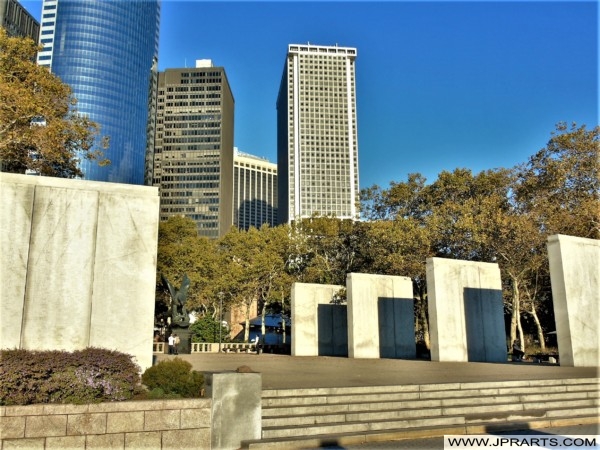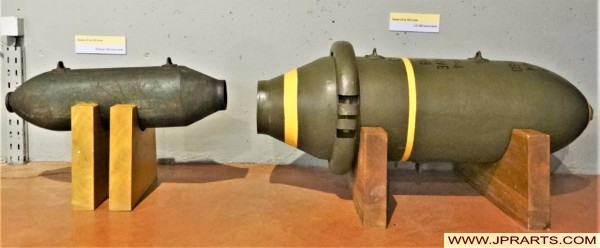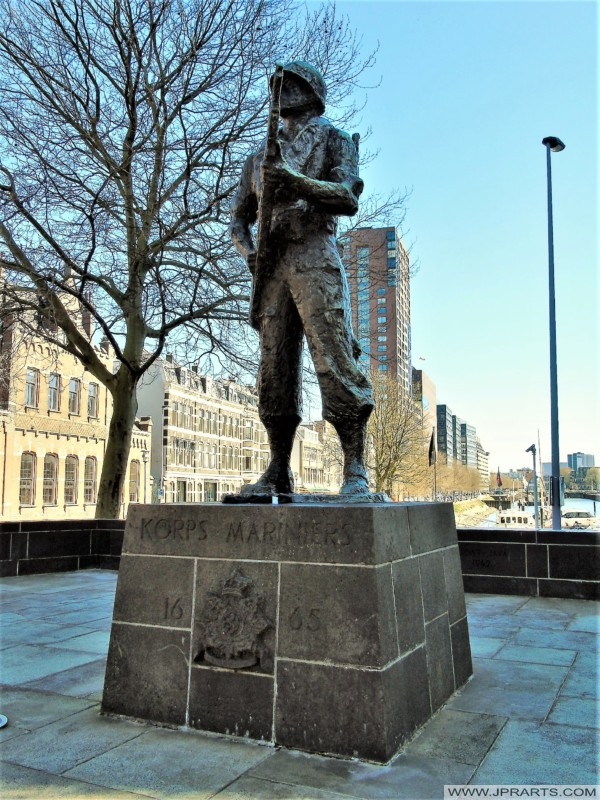Despite Dutch neutrality, Nazi Germany invaded the Netherlands on 10 May 1940 as part of Fall Gelb (Case Yellow). On 15 May 1940, one day after the bombing of Rotterdam, the Dutch forces surrendered. The Dutch government and the royal family saved themselves by fleeing the country and going to London. Princess Juliana and her children moved on to Canada for additional safety.
The Netherlands in World War II
Holanda en la Segunda Guerra Mundial
Die Niederlande im Zweiten Weltkrieg
The invaders placed the Netherlands under German occupation. Active resistance, at first carried out by a minority, grew in the course of the occupation. The occupiers deported the majority of the country’s Jews to Nazi concentration camps. Due to the high variation in the survival rate of Jewish inhabitants among local regions in the Netherlands, scholars have questioned the validity of a single explanation at the national level. In part due to the well-organized population registers, about 70% of the country’s Jewish population were killed in the course of World War II – a much higher percentage than in either Belgium or France. Uniquely among all German-occupied areas, communists in and around the city of Amsterdam organized the February strike – a general strike (February 1941) to protest against the persecution of Jewish citizens.
Нидерланды во Второй мировой войне
Les Pays-Bas pendant la Seconde Guerre Mondiale
第二次世界大战中的荷兰
World War II occurred in four distinct phases in the European Netherlands:
- September 1939 to May 1940: After the war broke out, the Netherlands declared neutrality. The country was subsequently invaded and occupied.
- May 1940 to June 1941: An economic boom caused by orders from Germany, combined with the “velvet glove” approach from Arthur Seyss-Inquart, resulted in a comparatively mild occupation.
- June 1941 to June 1944: As the war intensified, Germany demanded higher contributions from occupied territories, resulting in a decline of living-standards. Repression against the Jewish population intensified and thousands were deported to extermination camps. The “velvet glove” approach ended.
- June 1944 to May 1945: Conditions deteriorated further, leading to starvation and lack of fuel. The German occupation authorities gradually lost control over the situation. Fanatical Nazis wanted to make a last stand and commit acts of destruction. Others tried to mitigate the situation.
Holandia w czasie II Wojny Światowej
Nederland in de Tweede Wereldoorlog
The Allies liberated most of the south of the Netherlands in the second half of 1944. The rest of the country, especially the west and north, remained under German occupation and suffered from a famine at the end of 1944, known as the “Hunger Winter”. On 5 May 1945 total surrender of all German forces led to the final liberation of the whole country.
הולנד במלחמת העולם השנייה
i Paesi Bassi nella Seconda Guerra Mondiale
Visit Netherlands Travel to Book Flights and Hotels Cheap Online
Visit Cheap Shopping to Order Books, Blu-rays & DVDs Online








